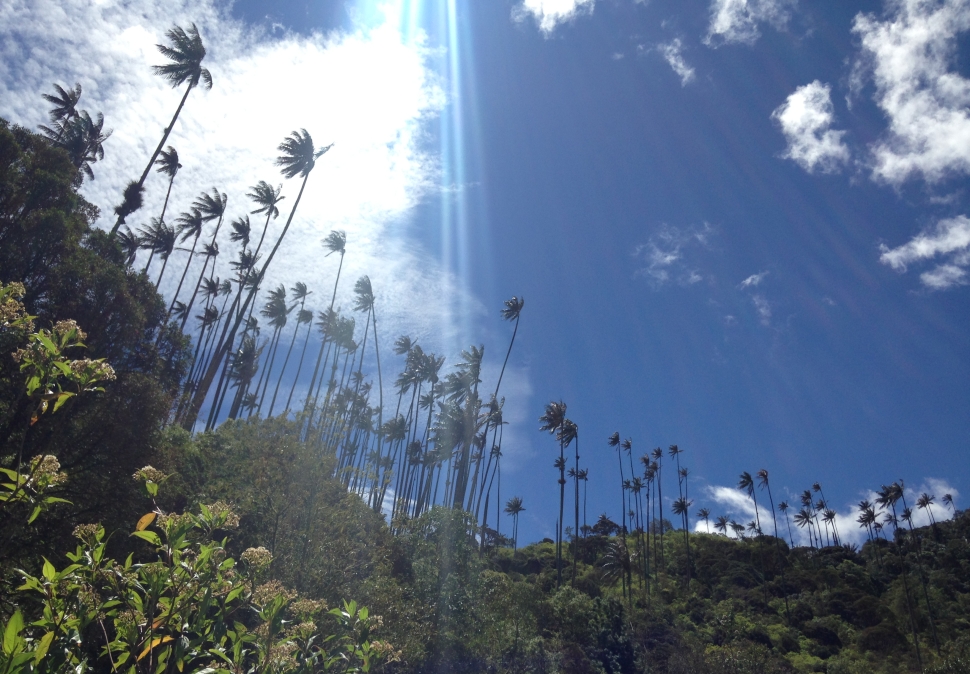The official national tree of Colombia is a dramatic plant indeed. Growing up to 200 feet in height, the Quindio wax palm (Ceroxylon quindiuense) is the tallest palm tree in the world and one of the least common in the wild. It occurs naturally in only a few mountain valleys in Colombia.
Despite being Colombia’s national tree, it’s only been protected since 1985. At that time, the species was on the brink of extinction. The wax palm disappeared as part of the general clearing of land and deforestation across Colombia, but was also sought after in particular for the wax on its trunk, used for candles, and for its fronds, used on Palm Sundays.
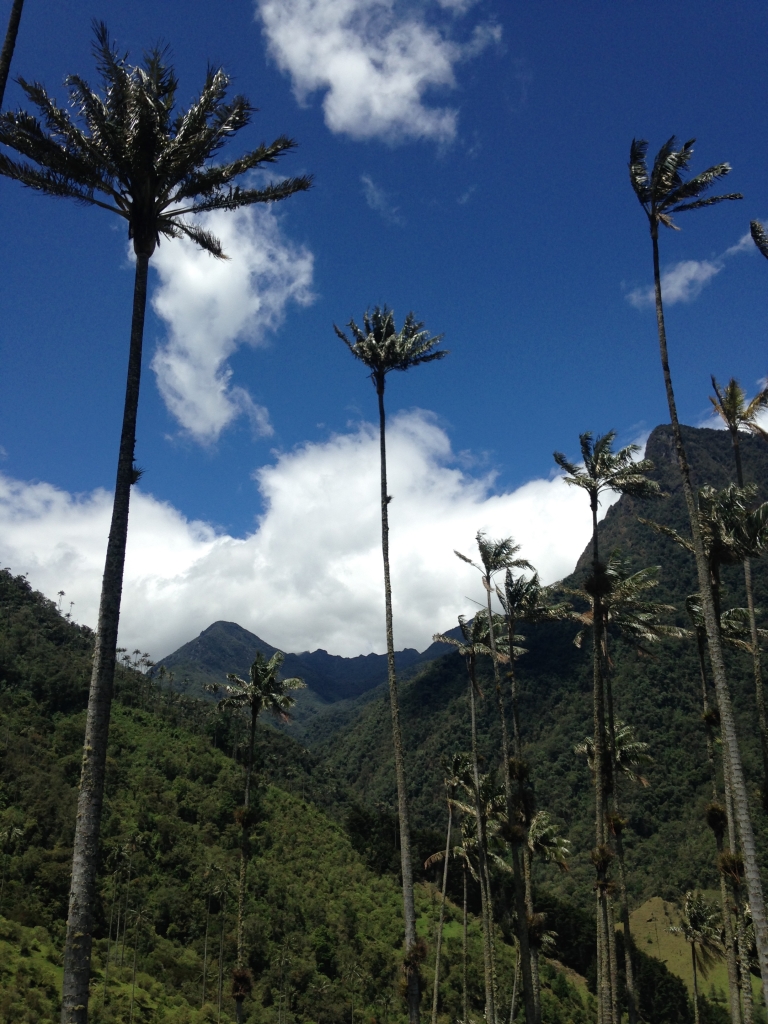
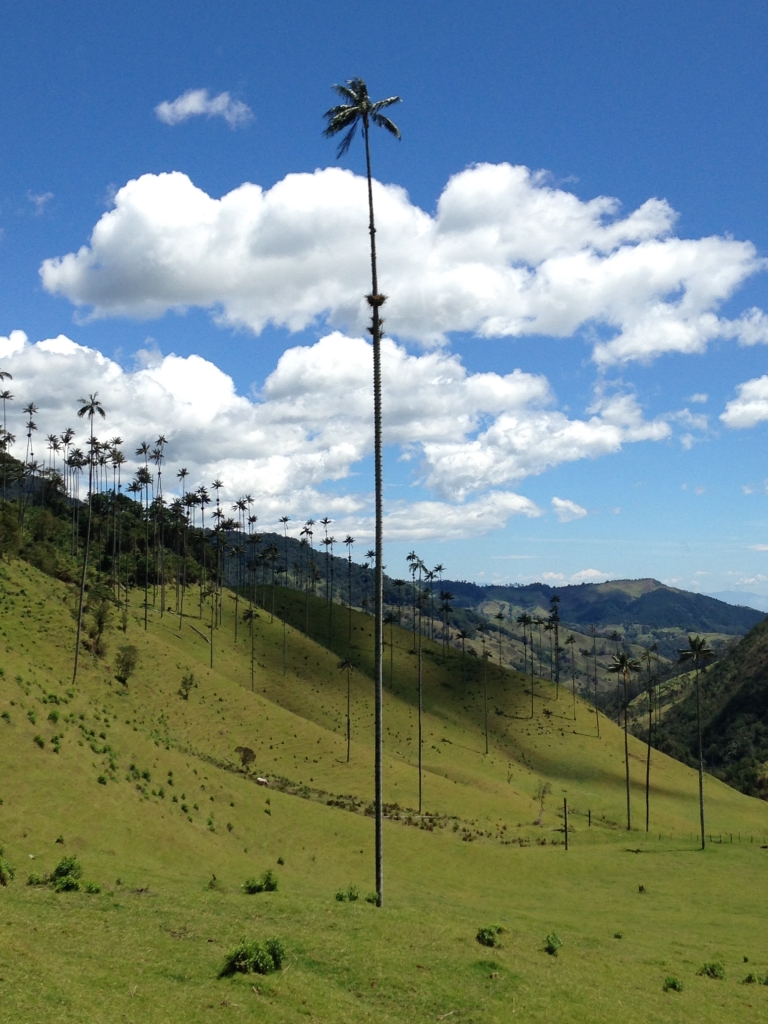
Today, the best place to see wax palms is the Cocora Valley, (in the Zona Cafetera and accessible from the charming town of Salento) which not only includes the largest concentration of them in existence, but is also fantastically scenic on its own – at times, it seemed to me to be somewhat reminiscent of a tropical Yosemite.
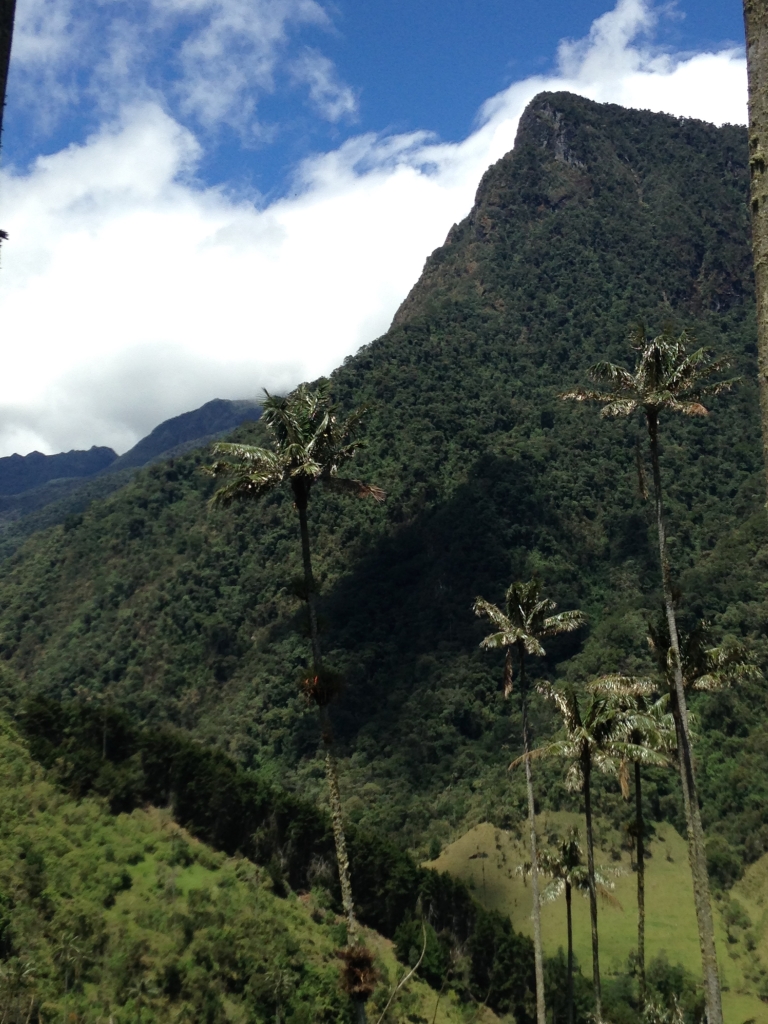
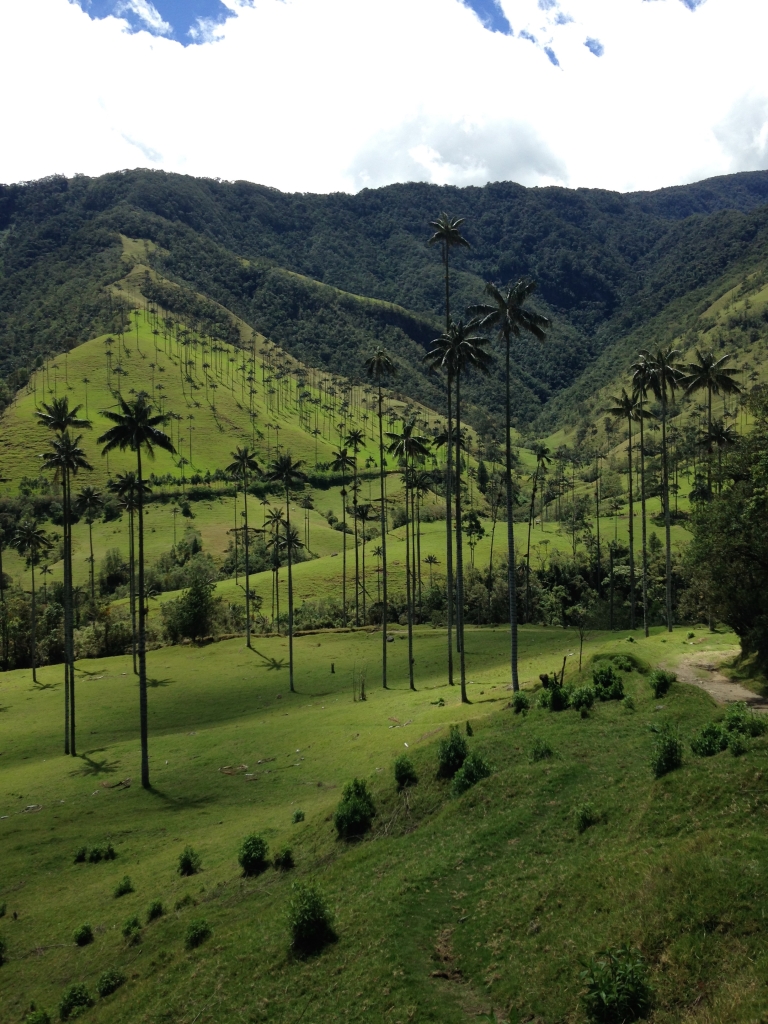
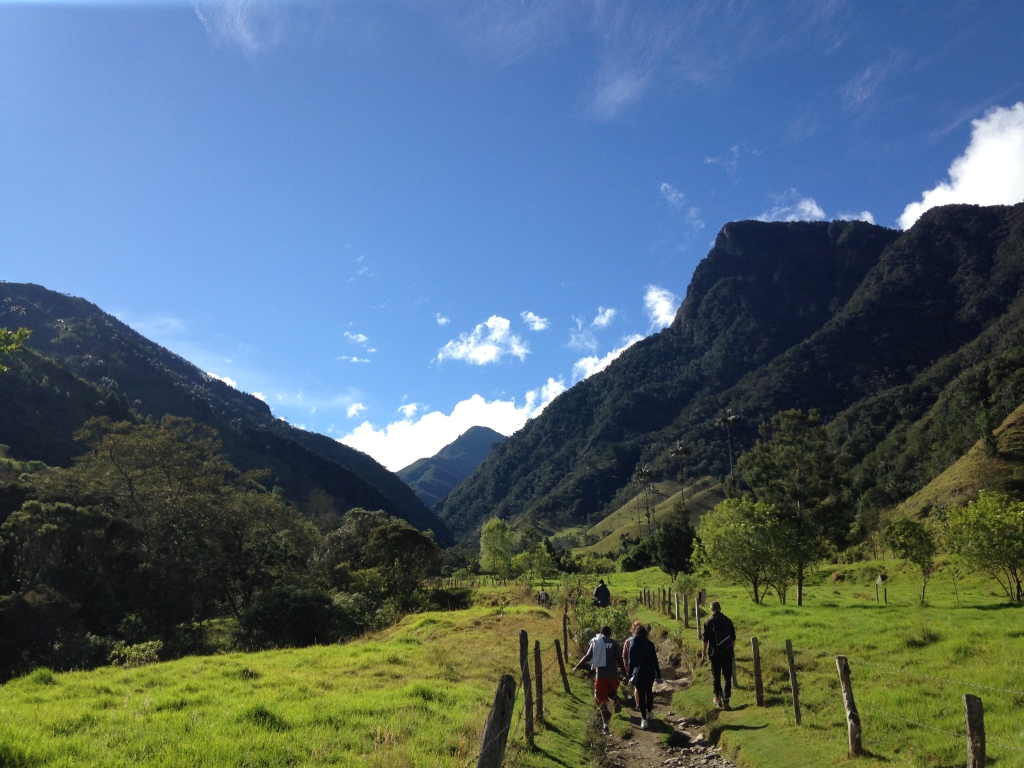
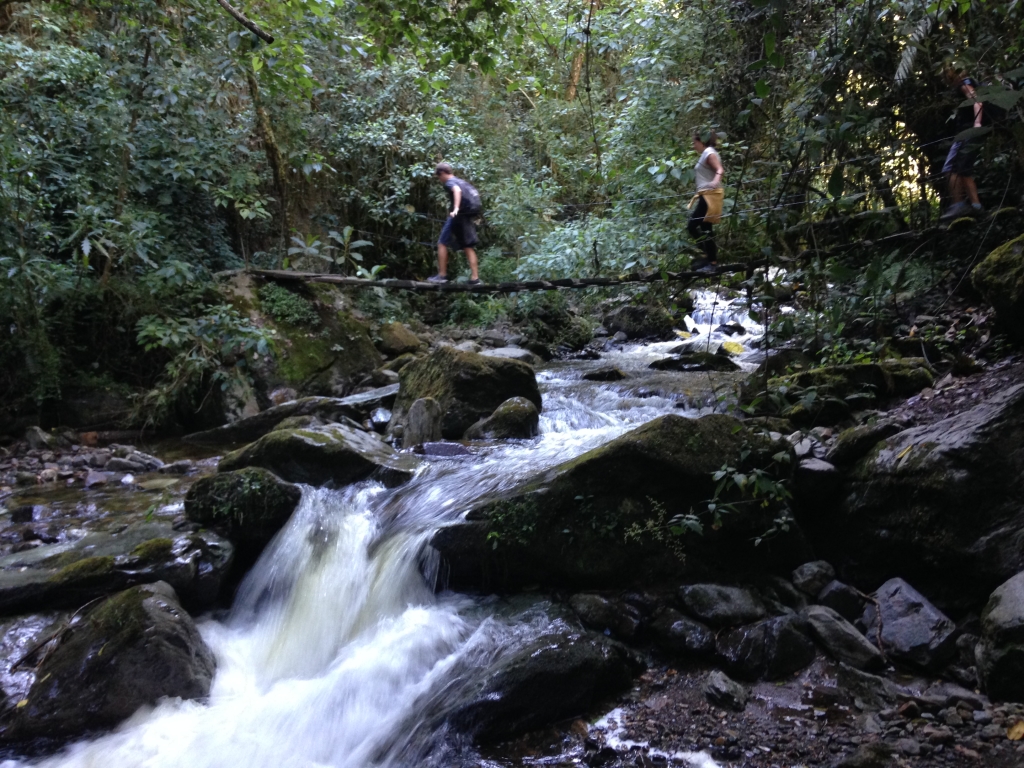
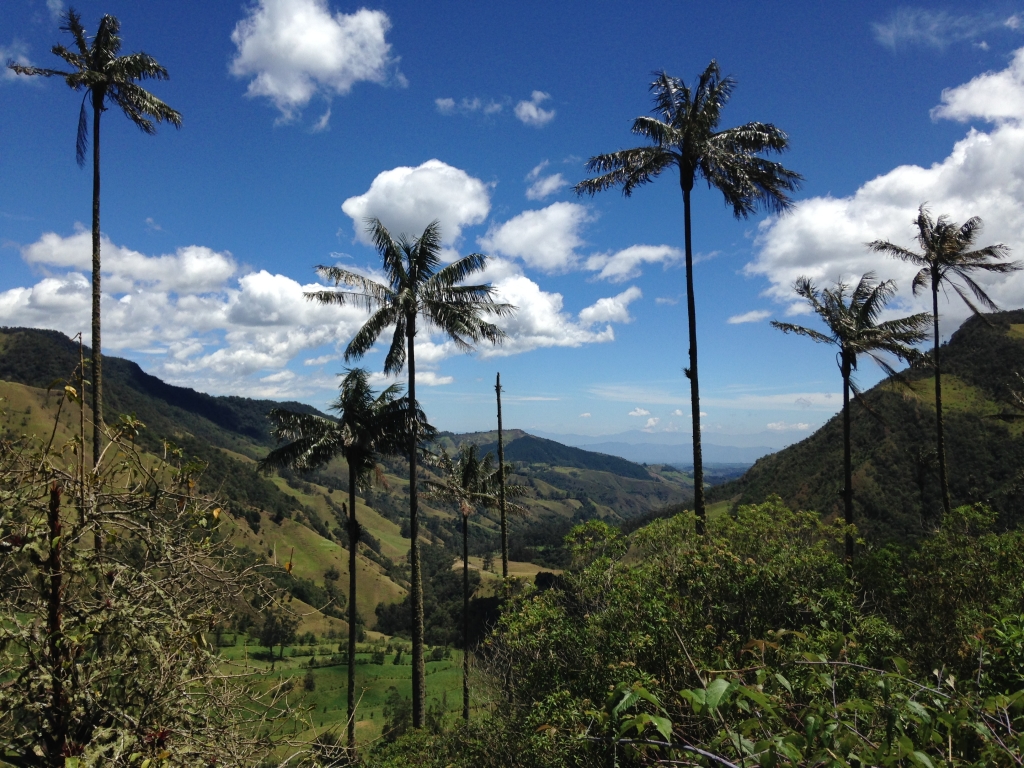
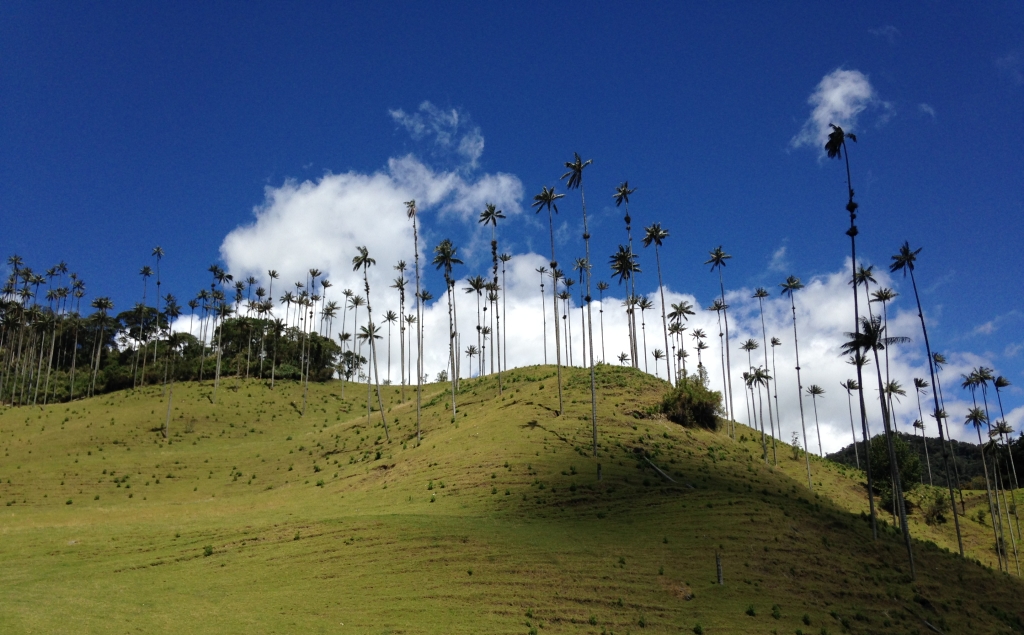
The trail into the valley first goes through some cloud forest at the bottom. This forest at one time covered the entire valley, and accounts for the extreme height of these palms. They evolved to grow through the high canopy and reach precious rays of sunlight.
A side trail leads up to a lodge (make sure to pay the COP$5,000 fee as the many signs indicate! It includes a hot beverage) swarming with several species of hummingbirds and crawling with coatis (an animal related to raccoons, not oppossums, as the woman next to me mused).
Walking back, the trail goes up the valley to Finca Montaña, and loops back out of the valley past the groves of wax palms, which are now at eye level.
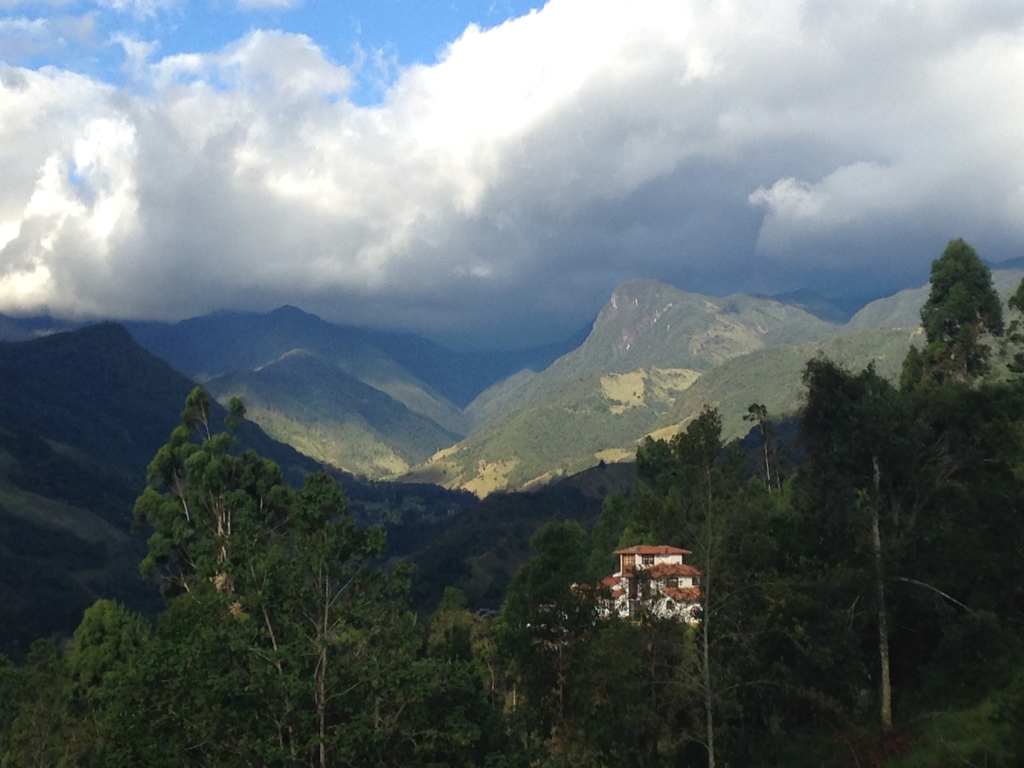
Back in Salento, the entire Corcora Valley could be seen from a hilltop – beautiful, but too distant to reveal the valley’s precious ecological curiousity, the Quindio wax palms.
